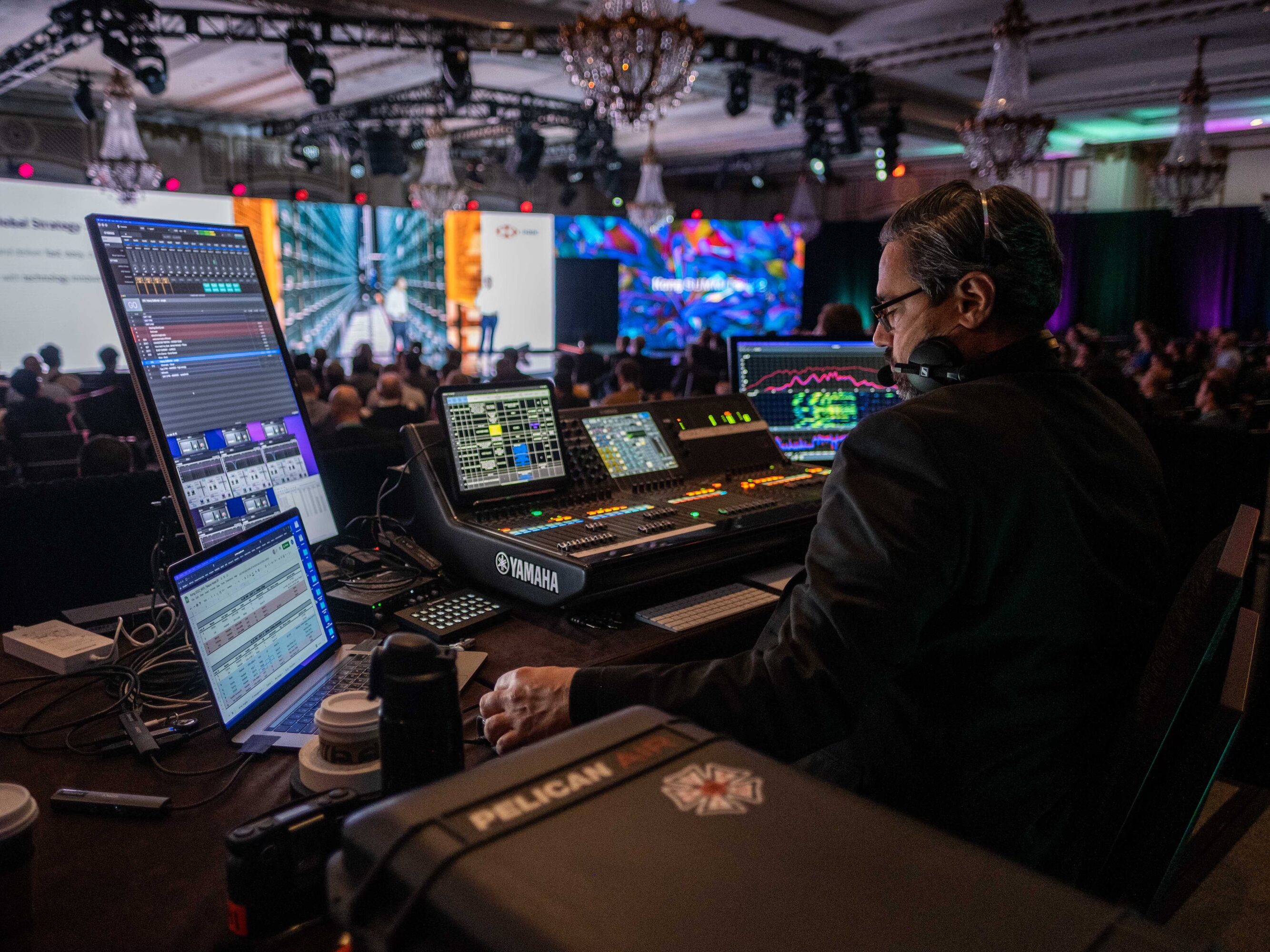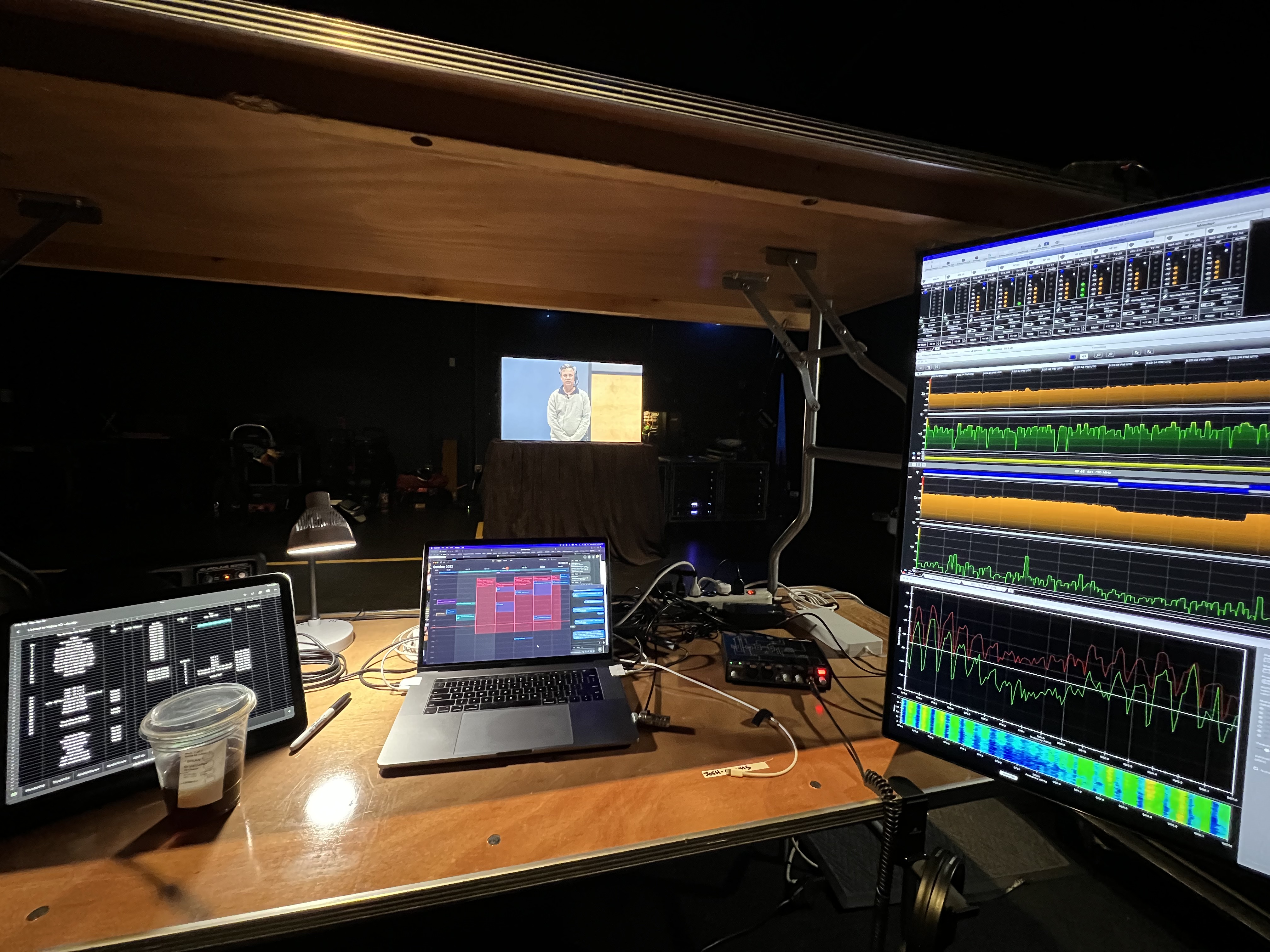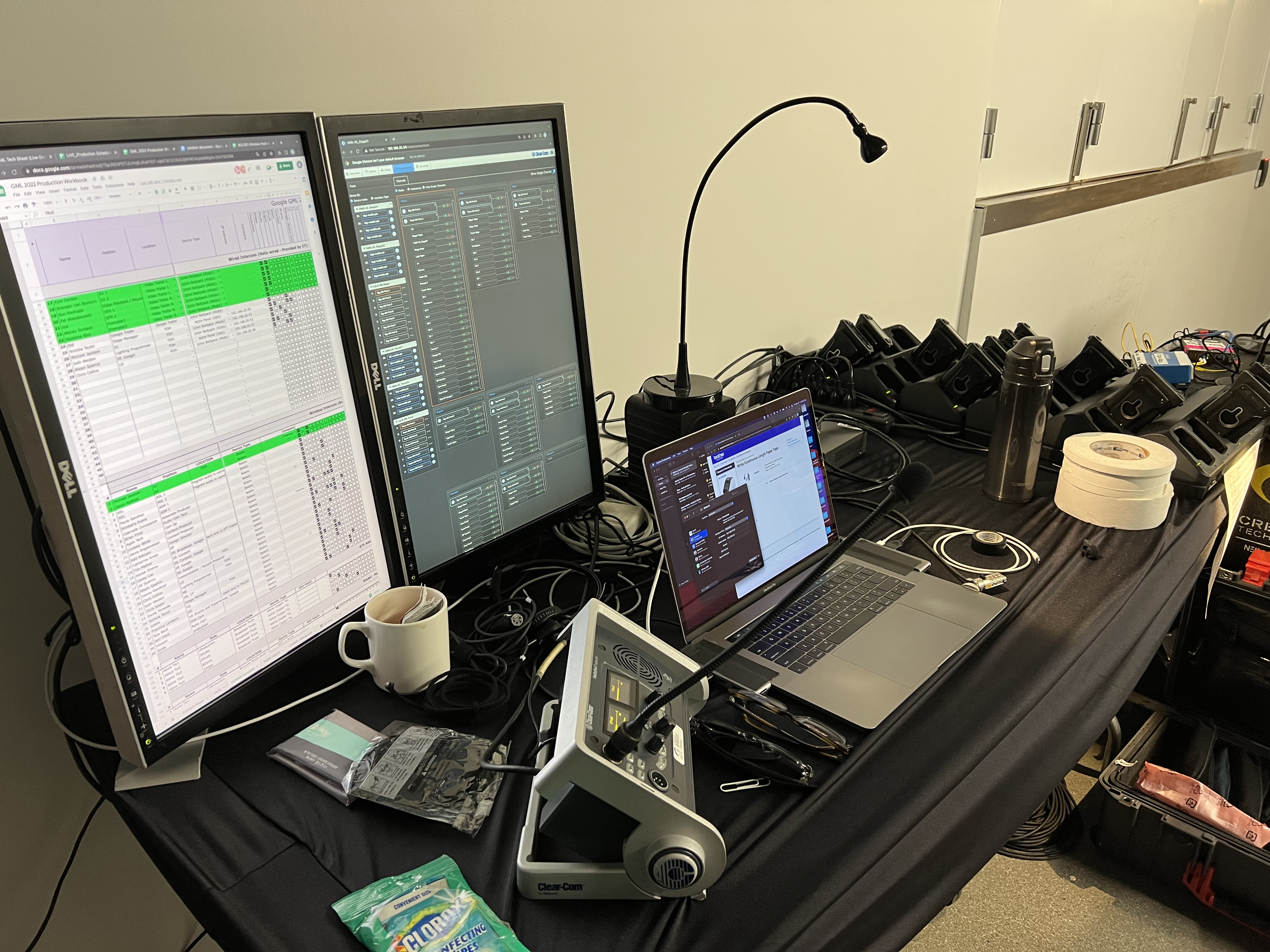Services
Fsound offers an array of professional audio sound services:
- A1 Audio Engineering
- FOH, Broadcast, Monitors Sound Mixing
- Riedel & Clearcom intercom design & operation
- RF coordination
- Audio Systems
For a wide range of applications:
- Product launches
- Press events
- Corporate events
- Conferences
- Virtual & hybrid events
- Trade Shows
- Live Events

A1 / Live Sound Mixing
A sound mixer should deliver impactful, well-balanced audio to ensure your message & media are clearly received and felt by those attending your event both in person and on air. Fundamentals like gain structure are key! A desk should be ran warm and layered with busses to net the lowest possible noise floor and maintain maximum control and routing flexibility. Recording voice overs on-site and redundant playback of audio program are standard practice. In addition, a combination of testing and meausrement hardware and software are deployed on every job to maintain professional broadcast standards.
RF Coordination
As the FCC continues to sell off coveted bandwidth, it’s becoming more and more difficult to squeeze the number of microphones and in-ear-monitors needed for a large scale production. Planning begins long before the event. Including researching tv channels broadcasted in your event location, # of devices needed, site surveying with professional scanning equipment to collect data, and inventory recommendations to accommodate counts needed. While studious preparation is key, an RF coordinator belongs on show site to stamp out interference with best practices and backup frequencies.


Matrix Intercom / PL
There is arguably nothing more important than the ability of the crew to communicate effectively and efficiently in a live production. An experienced intercom technician can program channels, groups, and point to points to limit chatter on common channels. Correctly merging different systems is crucial to tie in your broadcast truck and those working from home or the office. With large wireless deployments becoming more common, the demand to stay current on rapidly advancing technology is more important than ever.
Audio Systems
It’s not just racks and stacks anymore. Todays audio systems are state of the art, with price tags to match. Deploying these rigs takes careful preparation. Coverage, Power draw, weight loads, and signal distribution are calculated in pre production long before load in. Once on-site, arrays need to be safely built & flown to the correct design specifications. Though these rigs have powerful prediction software, it still takes an engineer with knowledge of phase alignment, coherence & magnitude to bring all the elements together, resulting in an impactful, yet intelligible experience.


A2
Going with whomever you can find locally is not always the smartest choice. As they always say, the best A2’s are A1’s. They know how crucial mic placement is - it’s the difference between being heard, and the A1 struggling for an entire segment. If there’s a panel, they know where to best place mics where panelists may favor speaking towards a moderator. Or if wearing headsets, what side to place them on for best camera blocking. But being an a2 is much more than technical know how. The A2 has more interaction with the end client than anyone on else on the crew! At the end of the day you want a professional who not only works well with the stage manager but is calming, quick, presentable, not socially awkward, and ALWAYS gives last looks at talent just before talent enters the stage.
